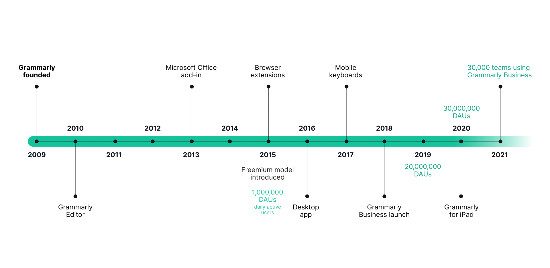This $13 Billion Startup Is Tackling A $400 Billion Problem
On June 7, 2014 - 60 years to the day after Alan Turing's death - a "chatbot" called Eugene Goostman fooled 33% of judges at a Royal Society competition into thinking it was a real human, fulfilling Turing's 1950 prediction that by the year 2000, machines would be able to fool human judges 30% of the time after five minutes of questioning.
The AI (or artificial intelligence) accomplished the feat partly by pretending to be a 13-year-old boy from Ukraine, camouflaging some of its odd delivery and shoddy English skills. But since that milestone eight years ago, AI technology has come a long way.
Scientists used AI models to analyze datasets for the COVID-19 vaccines in 2020 (that's one reason the vaccines were able to go to human trials so quickly). Just last week, a video circulated showing San Francisco police pulling over an empty driverless car, confusing the officers. And far from training computers to imitate human speech patterns, AI tech is now teaching humans to write better English.
The global AI market was valued at $87.04 billion in 2021, and it's projected to surpass $1.5 trillion by 2030, a compound annual growth rate (CAGR) of 38.1%. The number of AI patents has increased 30-fold since 2015.
Investors are taking notice of this opportunity. Venture-backed companies spent $8 billion acquiring an estimated 72 artificial intelligence developers last year, compared to 49 in 2020. According to Stanford's latest AI index, global private investment in AI more than doubled from the previous year to $93.5 billion in 2021. A survey by Gradient Flow found that funding for natural language processing (NLP) rose by over 30% year over year for a third of companies questioned.
Today, I want to tell you about this groundbreaking machine learning startup, and about the easiest ways you can get into this lucrative sector of investing...
The Computer Teaching Humans to Write
An estimate from analyst Josh Bernoff showed that $400 billion is lost in productivity due to poor writing every year, and more and more, professionals are turning to Grammarly Inc. for help. It's a tech startup based in San Francisco, California, that makes AI powered typing assistant tools.
Its software is essentially a much more sophisticated version of the spelling/grammar checker that comes pre-installed in most word processors. Instead of just checking for basic mistakes (which it does as well), Grammarly's AI also reviews writing for tone, clarity, conciseness, and more. It has a built-in plagiarism tool that checks the internet for any matches, and it even marks language that may be offensive and offers inclusive alternatives.
Writers can also set goals based on what they're writing, specifying the intent, style, emotion, and sort of audience they're going for, and Grammarly will adapt and make suggestions based on those goals. The software works across more than 500,000 applications and websites, including email clients, enterprise software, and word processors. Customers are charged on a "freemium" model - you get the basics for free, and can pay a subscription for the more advanced features.
Grammarly's innovative use of machine learning is what allows it to make such complex and specific suggestions. In order to implement the tool that reviews tone, for instance, researchers first surveyed Americans to better understand language signals like capitalization, punctuation, and amplification words like "very" or "extremely." They then trained models using internal and publicly available datasets to interpret tone and tell users if their writing sounds formal, encouraging, assertive, etc.
Today, Grammarly has 30 million daily active users and 30,000 professional teams across a variety of industries. The company offers different products for different use cases: Grammarly Business, Grammarly for Education, and Grammarly for Developers are a few.

Source: Grammarly.com
And there's plenty of room for it to grow even more. CEO Brad Hoover remarked that the business has accelerated even more since many companies have transitioned to remote work: "In the past, people were left to their own devices to figure out how to communicate well. We're now at a very unique point in time to use software to enable people to communicate."
And since the majority of English speakers live in areas where it's not the main language, Grammarly has the potential to expand into many more markets.
This is not lost on investors. Grammarly raised $200 million in funding from new investors in November 2021, giving it a valuation of $13 billion and making it the 10th most valuable startup in the United States. Executives plan to use the capital raised for further product innovations as well as team growth.
Grammarly is still a private company, and it has not yet filed for an IPO. But there are still ways for investors like you to get in on this growing trend.
How to Invest in AI Startups Like Grammarly
One option available to you is to keep an eye out for the next time Grammarly does a call for funding. It's not guaranteed to happen, but if it does, it's a great chance to get in.
Another way of owning a piece of this market is to invest in funds that concentrate on IPO holdings, like the Renaissance Capital IPO ETF (IPO). This fund routinely rebalances its portfolio to hold the most liquid companies that have recently gone public, and some of its holdings include Palantir, Datadog, Cloudflare, and other SaaS giants. As more and more AI companies go public, this fund will likely refocus to include them.
See disclaimers here.



